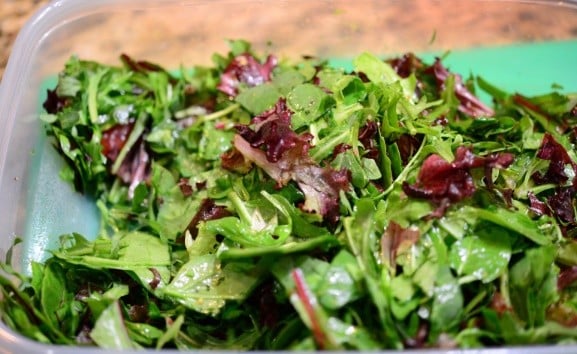Besides vegetables, you can also include some safe herbs and spices in your bearded dragon vegetable mixes. Furthermore, some of them can be part of your terrarium’s live plants. Which herbs are safe, and which ones are not?
1. Basil
Belonging to the mint family, basil, or great basil is a culinary herb with a taste that resembles anise. There are many varieties of basil like the sweet or Genovese basil, Thai basil, lemon basil, holy basil, among others.
Most cultivars are sweet basil, and they include cinnamon, Greek, dark opal, lettuce leaf, Rubin, globe, anise (licorice or Persian) basil.
Bearded dragons can eat fresh basil leaves and flowers. Add a small amount of basil to their veggies mix occasionally.
Some of the basil nutrients include vitamin A, C, and K, folate, calcium, iron, and manganese. Furthermore, basil has anti-inflammatory, antioxidants, and antibacterial properties.

2. Bay Leaves
Bay leaves are aromatic culinary herbs with a sharp, bitter taste obtained from bay laurel as well as from California, Indian, Indonesian, Mexican, and West Indian bay leaf.
Beardies should not be given or have bay leaves since there is no detailed research to determine if it is safe or toxic. Moreover, some laurel family members are toxic.
Besides, bay leaves are tough to digest, have a pungent taste, and you could mistake them with some unrelated look-alike plants like Mountain laurel and cherry laurel, which are toxic to humans and animals.
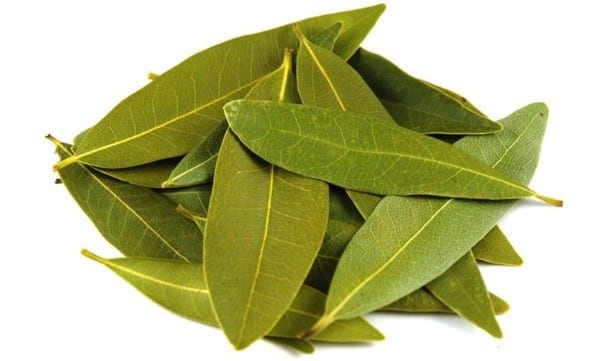
3. Celery
Celery is a vegetable and herb in the family Apiaceae that has three main cultivars, the celery, celeriac (root celery), and leaf celery.
Can bearded dragons eat celery, including its leaves and stalks? No. We do not recommend feeding celery to your beardies. While it is not toxic or poisonous, it is not good as these pets will get very little nutritive value, since this herb has over 95% water and a lot of fiber.
Additionally, feeding them a lot of celery may lead to diarrhea. However, in the case of constipation, you can feed them a small amount of celery to help encourage bowel movements. However, avoid excessive amounts will worsen constipation.

4. Chives
Chives are perennial bulb-forming herbs related to leek, Chinese onions, shallot, scallion, and garlic with edible stems, leaves, and flowers.
Can my bearded dragons eat chives? No. Do not feed chives to your beardies. It is very high in oxalic acid, 1480 mg per 100g, and potentially toxic to these reptiles.

5. Coriander or cilantro
Coriander, cilantro, or Chinese parsley is a tart, lime tasting herb whose leaves, root, and dried seeds used as herb or spices in culinary.
Bearded dragons can eat fresh coriander or cilantro leaves and stem once in a while. It can be a small part of their vegetable mix as it is a good source of vitamin A, C, K, manganese, iron, copper, and other nutrients.
Finally, coriander has anti-inflammatory and antimicrobial properties and will aid in digestion.

6. Fresh dill leaves
Dill is an aromatic culinary herb in the carrot, celery, or parsley family with fern-like leaves used in food flavoring. This herb is an excellent source of vitamin A and C, iron, calcium, potassium, magnesium, folate, riboflavin, manganese, et cetera.
Beardies can have fresh dill leaves as a treat in sparingly small amounts. Take caution since dill is high in vitamin A and can lead to toxicity if given in colossal quantities. However, avoid dill pickles as they have a lot of salt.
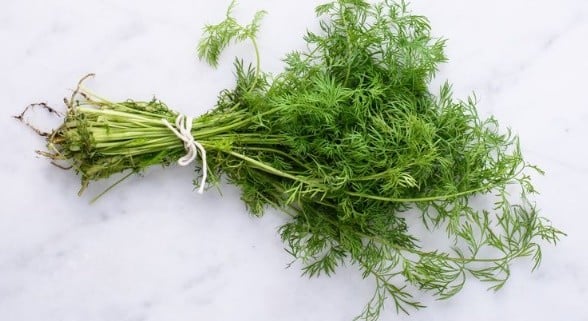
7. Fennel
Fennel is a culinary herb in the carrot family with feathery leaves, yellow flowers, and tastes like anise. You can use its foliage, seeds, and bulb to flavor food.
Beardies can eat fresh fennel leaves and flowers occasionally. These pets will benefit from its abundant calcium, iron, magnesium, potassium, vitamin B, and C.
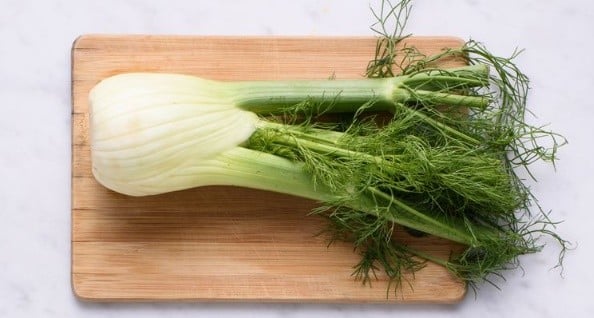
8. Lavender
Lavender is a name given to over 47 herbs in the genus Lavandula, which has a sweet taste with citrus or lemon undertones.
Can beardies eat lavender? Yes. These reptiles can eat fresh lavender foliage once in a while. This herb is a good source of vitamin A and C, calcium, iron, and other nutrients.

9. Parsley
Parsley or garden parsley is an aromatic flowering plant used to flavor or garnish foods. There are two main parsley cultivars, i.e., the root and leaf parsley.
If you love it, you deserve to know that your bearded dragon can also have a share of this herb’s fresh leaves rarely.
While it is an excellent source of calcium, iron, magnesium, potassium, vitamin A, C, and K, among other nutrients, it has very high amounts of oxalates, 1700 mg per 100g, a reason beardies should eat it rarely.

10. Rosemary
Rosemary is one of the popular food flavoring evergreen herbs in the mint family with needle-like leaves and pink, blue, or purple flowers.
Bearded dragons can eat fresh rosemary as an occasional herb. It is a good source of calcium, iron, magnesium, potassium, vitamin A, B6, folate, among other nutrients that these pets require.
Rosemary may help in boosting your beardies immunity, improve their blood circulation, digestion, and concentration.

11. Sage
Sage (common, culinary, or garden sage) is a cooking herb with a savory and a little peppery taste used alone or with other herbs like thyme and parsley.
Bearded dragons can eat sage leaves and flowers. Some of the nutrients it has include vitamin B6 and K, calcium, magnesium, and iron. Furthermore, it will boost their brain function and has anti-inflammatory properties and antioxidants

12. Thyme
Thyme flowers and leaves are safe for beardies. You can add a small amount in their vegetable mix once in a while. Some of its common species include lemon, orange, lime, caraway, wild, woolly, creeping, and English (summer, winter, or French) thymes.

13. Beets and Beetroot
The beet (garden, table, sugar, red, golden, or dinner beet) is a flowering plant with edible leaves (beet greens) and fleshy taproot known as beetroot.
Bearded dragons can eat beet greens. However, you need to give them a small amount and rarely as they are high in oxalic acid, about 650 mg per 100 grams of beet greens (beet tops).
Similarly, beetroot is ok for beardies as a rare vegetable as their calcium to phosphorus ratio is below one, while ideally, it shouldn’t. You need to peel and shred it before giving it to these lizards.
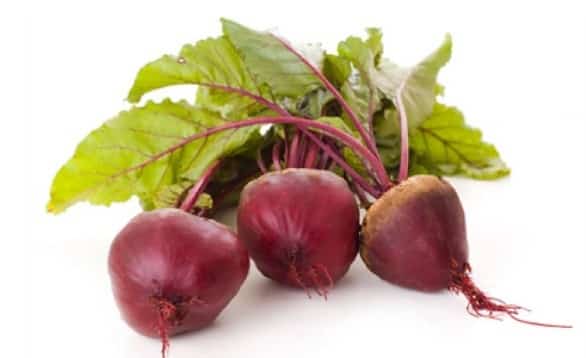
14. Green, red, or yellow bell pepper
Bell pepper is one of the Capsicum annuum cultivars whose fruits are less tart and do not have heat, a reason why they fall under sweet pepper. These fruits can be red, yellow, orange, white, green, or purple.
Can bearded dragons eat bell peppers or sweet pepper? Yes. Beardies can eat green, yellow, red, orange, white, or purple bell peppers. They are safe for these pets but should be fed to them occasionally.
Nutritionally, bell peppers have vitamins A, C, B6, E, and K1, folate, and other nutrients in small quantities and moderate amounts of oxalates (117.1mg per 100g). Shred them before offering them to these reptiles.
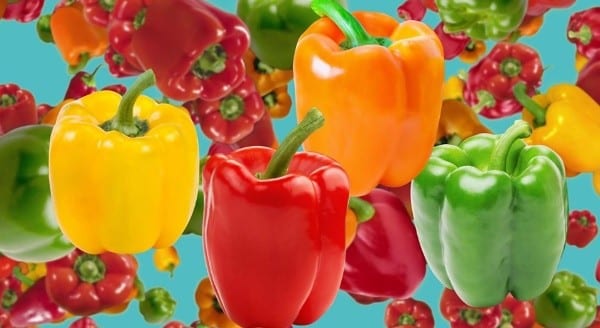
15. Pepper
Peppers refer to the whole genus Capsicum but not the genus Piper that has black pepper, Indian and Indonesian long pepper, Ashanti pepper, cubeb, and voatsiperifery.
Genus Capsicum has bell pepper or sweet pepper, which we have already looked at as well as cayenne, chili, banana, datil, Florina pepper, Jalapeño, et cetera.
Can bearded dragons eat green, red, yellow peppers? It all depends on whether they have heat or not. Do not feed your beardie any hot peppers (with capsaicin), whether they are green, yellow, red, or any other color.

16. Radicchio
Radicchio (Italian chicory) is a bitter but spicy tasting leafy vegetable with red leaves that have white veins that form a dense-leaved head.
Bearded dragons can eat radicchio occasionally. These spicy vegetables have little calcium, their calcium to phosphorus ratio is 1:2 and has goitrogens too.
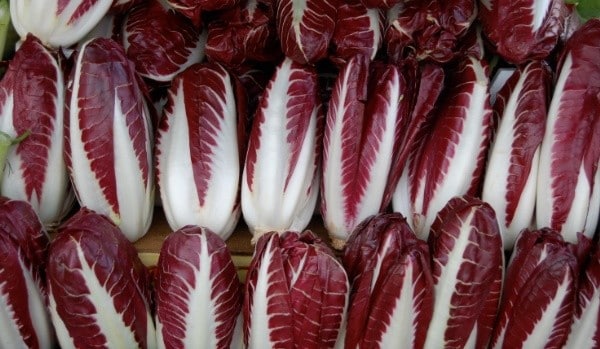
17. Chicory
Chicory is a woody, perennial plant with blue flowers. However, in rare cases, they may be white or pink. Some of its common names include blue daisy, blue sailors, blue weed, bunk, blue dandelion, coffeeweed, hendibeh, succory, wild endive, ragged sailors, cornflower, horseweed, or wild bachelor’s button.
The main chicory varieties are radicchio, radichetta, French endive, red endive, Belgian endive, Catalogna chicory, and sugarloaf.
Beardies can have chicory but not as a staple. You can make it be part of their salad once a week or after two weeks. Chicory is high in vitamin A and has calcium, iron, vitamin C, among other nutrients.
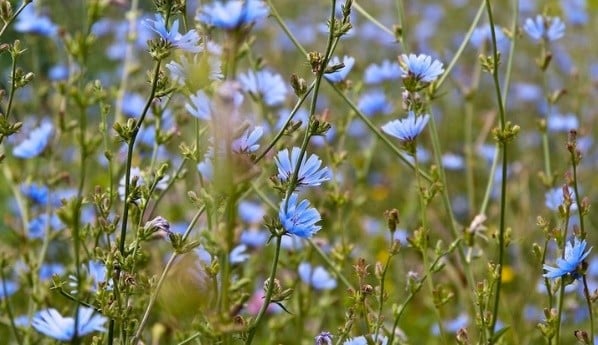
18. Garlic
Garlic is a culinary spice in the genus Allium that has shallots, onions, leeks, chives, and chinese onions with a pungent flavor with edible bulbs, leaves, and flowers.
While it is considered very beneficial to humans, bearded dragons should not eat garlic as it is potentially toxic and too acidic. Avoid giving this pet any part of the garlic plant.

19. Ginger
Ginger is a flowering plant whose rhizome and leaves serve as a spice or in folk medicine, especially the ginger root.
There isn’t sufficient information on whether ginger is safe for beardies or not. Unless confirmed, avoid giving this spice to these reptiles.

20. Onions
Onions (bulb or common onions) is a bulb vegetable and the most popular spice among the genus Allium members. When chopped, it is pungent and can be red or white. However, some varieties, such as sweet onions are not spicy.
Do not feed white or red onions to your bearded dragon as they are toxic if consumed in a large amount. Additionally, they are also acidic and may cause stomach irritation.

21. Spring or green onions – scallions
Scallions, otherwise known as green onions, spring onions or salad onions, are a spicy vegetable that has a milder taste when compared to onions. Besides onions, scallions are relatives of Chinese onion, chives, leeks, and shallots.
Can bearded dragons eat onions? No. Beardies shouldn’t eat raw or cooked green onions. They are potentially toxic if consumed in large amounts and very acidic too.
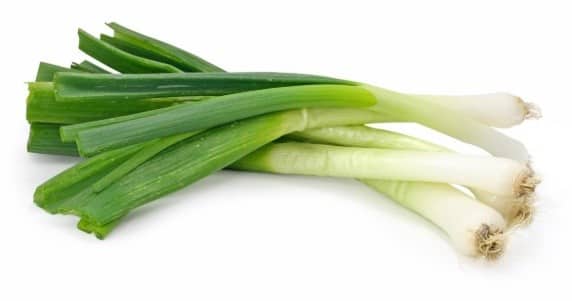
22. Spring mix
Spring mix refers to a salad several spring veggies. These vegetables include arugula, baby green and red romaine lettuce, butter lettuce (oak lettuce), baby spinach, green and red leaf lettuce, radicchio, Tastsoi, frisée, red chard, green and red mustard, lollo rosso, mizuna, tango lettuce, among others.
Whether bearded dragons can eat it or not will depend on the various spring veggies it as not all of them are safe, including spinach.
